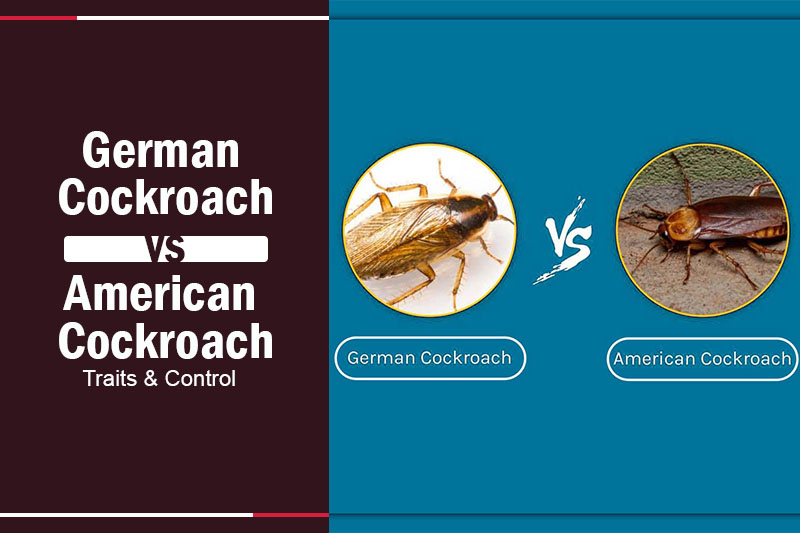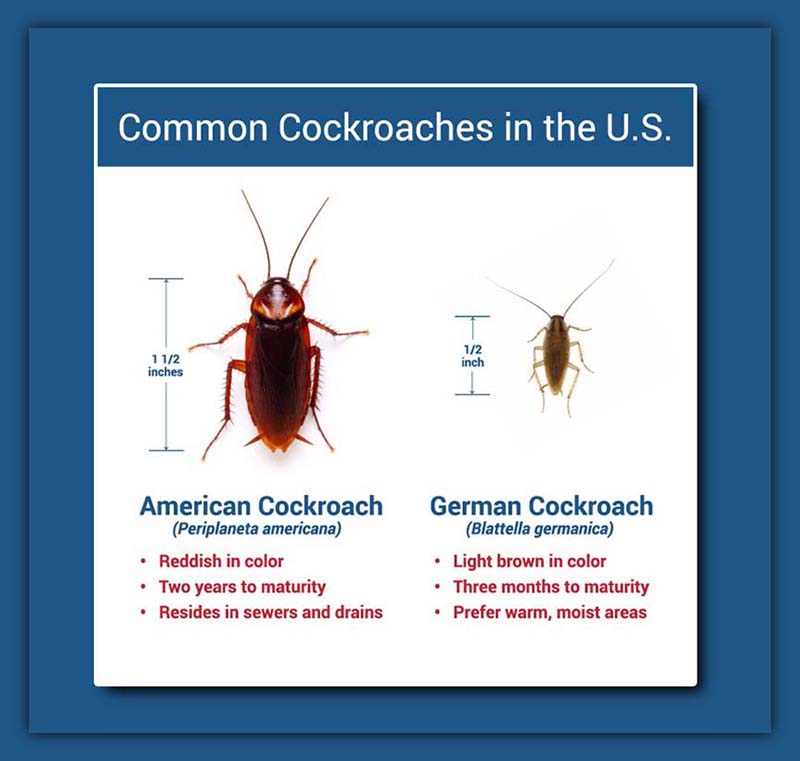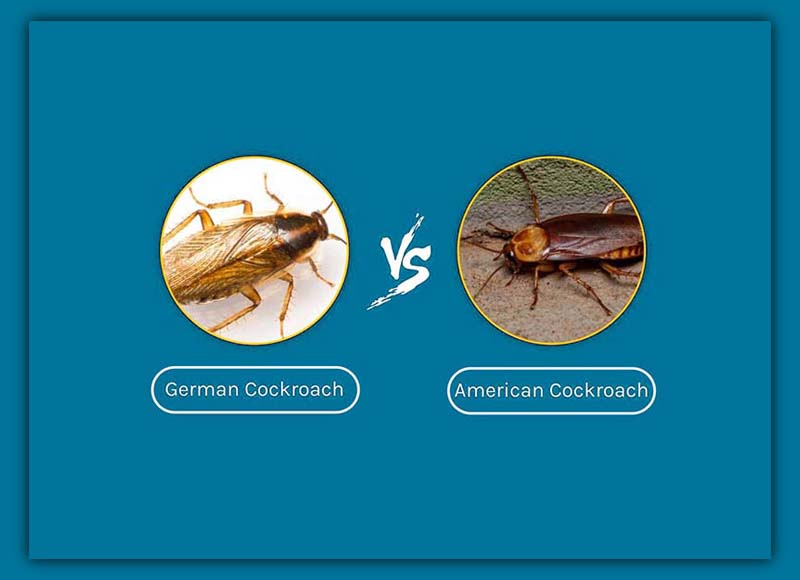Many homes face a relentless war against both the German and American cockroach.
Immerse yourself in our detailed exploration of “German Cockroach vs American Cockroach” to identify these invaders and discover effective countermeasures.

The Differences Between the German cockroach vs American cockroach
Both the German and American cockroaches have distinct characteristics that set them apart.
While they might look similar to the untrained eye, there are nuanced differences in their size, appearance, and other attributes. Let’s find out these variations.
German cockroach vs American cockroach: Size
German cockroaches typically measure around 0.5 inches in length, while their American counterparts are considerably larger, ranging between 1.1 to 2.1 inches.
Despite the difference in size, both species weigh about the same, approximately 0.0037oz.
Read more Asian Cockroach Life Cycle: Keys to Effective Home Defense
American cockroach vs German cockroach: Appearance
Though quite similar, there are some key differences. German cockroaches are light brown and might appear tan to the untrained eye.
They possess a slender physique, six long legs with spikes for climbing, long antennae nearly equal to their body length, and two dark-brown bands on their head sides.
The nymphs, or the young ones, have these dark bands extending down their bodies.
American cockroaches, on the other hand, sport a reddish-brown hue with yellowish markings behind their heads.
They also have two sets of wings, with the sturdier pair in front. Nymphs resemble the adults but lack wings and undergo several molts before full metamorphosis.
Read more How to Tell the Difference Between Water bug vs Roach
German roach vs American roach: Location and Habitat
Both species have a global distribution, originating from Africa.
German cockroaches are ubiquitous, while American cockroaches have a significant presence in parts of Europe, North America, and Africa.
Both species prefer warm and moist areas, often near human residences.
German cockroaches are frequently found in kitchens and bathrooms, while American ones prefer basements, sewers, and porches.
German cockroach vs American: Predators and Threats
Common predators for both include frogs, lizards, mice, and even chickens.
Humans, in particular, pose a threat due to the roaches’ tendency to infest and carry pathogens.
German cockroaches encounter humans more often as they inhabit areas like kitchens and bathrooms.
American cockroach and German cockroach: Diet
Both species are omnivorous. They consume a wide range of items, from common things like papers, stamps, and food remnants, to more unusual items like toothpaste and plastic.
Essentially, they aren’t picky eaters and can consume almost any organic matter they come across.
German Vs American Cockroach: Litter Size/Gestation Period
German cockroaches have a larger average litter size, with about 30-40 eggs per case, compared to the 16 eggs of the American cockroach.
However, German cockroaches have a faster gestation period of around 28 days, while American cockroaches gestate between 6-8 weeks.
German vs American Roach: Speed
Both species are naturally wary of humans and will dash out of sight quickly when detected.
The German cockroach can reach speeds up to 3 miles per hour, whereas the American cockroach is slightly faster, clocking in at about 3.4 miles per hour.
Read more American Cockroach Life Cycle: From Egg to Intruder
How to control German cockroaches and American cockroaches
Managing a cockroach infestation requires specific strategies tailored to each species.
For the German Cockroach:
- Aerosol Products: These can quickly knock down the population and are best for immediate relief.
- Residual Aerosols: These are long-lasting treatments that can deter cockroaches from inhabiting certain areas.
- Baits: These are especially effective for German cockroaches. When ingested, they not only kill the consumer but also those that feed on its carcass.
- Perimeter Sprays: These are designed to establish a protective barrier, preventing cockroaches from entering or re-entering an area.
For the American Cockroach:
- Granular Baits: Suitable for broader areas like attics and crawl spaces. They work similarly to other baits, poisoning cockroaches that ingest them and those that feed on poisoned carcasses.
- Perimeter Sprays: As with the German cockroach, these sprays create a barrier to deter American cockroaches.
Tips:
- Place baits in high-traffic areas for cockroaches to maximize effectiveness.
- Remember that when one cockroach succumbs to poison, its body can indirectly poison others that may resort to cannibalism.
- Sprays not only kill on contact but can also disrupt cockroach development and reproduction. Use them on frequented surfaces and hideouts.
Conclusion
In wrapping up our exploration of “German Cockroach vs American Cockroach” it’s evident that knowing the differences between these two pests is paramount for effective control.
Armed with this knowledge, you’re better equipped to handle and prevent infestations. Have you had any personal experiences battling these critters?
We’d love to hear your stories! Don’t forget to explore more insightful blogs from Pestweek to stay ahead in the game against unwanted pests.

Calina Mabel has over 15 years of experience in the field of journalism and communications. Currently, Calina Mabel is the Content Writer for categories such as Cockroach, Ants, Bed Bugs, Mosquito, Rodent, Termite, and Flies on Pestweek.com. She aims to build content for these categories with a focus on providing valuable and accessible information to readers, in order to create the world’s largest knowledge community about Pests.
All content written by Calina Mabel has been reviewed by Emily Carter.




